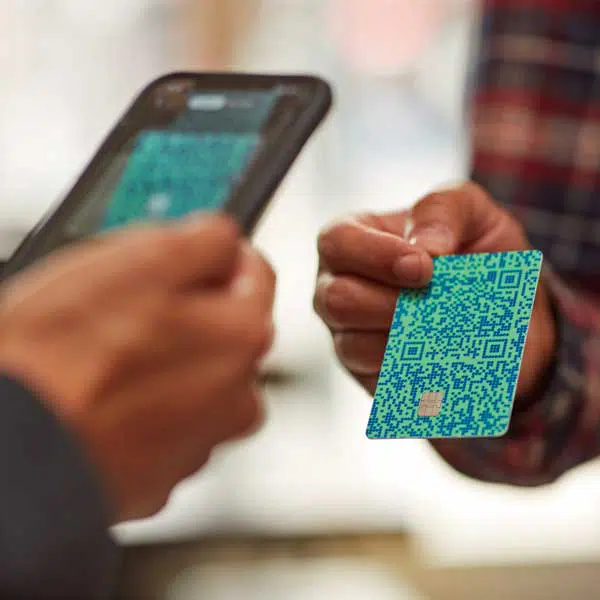PayPal Holdings Inc. on Monday launched a Visa-branded credit card for its Venmo peer-to-peer payment service that features a QR code for P2P transfers in addition to a near-field communication chip for merchant acceptance. The new product arrives as PayPal searches for ways to boost revenue for its wildly popular P2P network, which allows users to make transfers for free.
The no-annual-fee card, issued by Stamford, Conn.-based Synchrony Financial, is not only the first issued on behalf of Venmo but may well be unique in featuring QR code capability in addition to NFC, according to experts reached by Digital Transactions News. The card arrives at a time when consumers are turning to contactless technology in stores to avoid possible Covid-19 infection. At the same time, mobile-wallet companies like PayPal are actively investigating QR codes as a way to allow users to make fast contactless payments with or without cards.
With its dual contactless technologies, the Venmo credit card is “clearly a ‘future forward’ idea and it positions PayPal well as an acceptance offering that can be used in any situation, physical or digital,” says Thad Peterson, a senior analyst at Aite Group, a Boston-based consultancy.
PayPal says the card is available to all “eligible” Venmo users in the United States. The Venmo user base numbers some 60 million total, according to information PayPal released Monday. The card will offer automatic cash back on “eligible” purchases and a “personalized” rewards program. Users can manage the card through the Venmo app. The card’s “personalized” rewards allow users to earn up to 3% cash back each month on purchases made in their top spend category. The categories can change month-to-month as usage changes. Users can also split purchases within the Venmo app.

The new card comes as PayPal looks for ways to build revenue for the Venmo service and also has embarked on an ambitious program to enable point-of-sale transactions via QR codes. In July, the company announced it would enable QR code payments at 8,200 CVS pharmacy stores in the United States in a venture with processor InComm. In all, PayPal has initiated QR code payment capability in some 28 countries.
Other payments companies, including Shift4 Payments Inc. and NMI, have also pushed QR technology in recent months either to enable transactions or as a way to deliver a bill or other document that could trigger a payment.
Incremental POS usage for Venmo via the new card would also help the service boost its revenue potential, if, as expected, Synchrony and PayPal will share interchange income on the Venmo card transactions. Neither company immediately responded to Digital Transactions News queries regarding the matter, but PayPal executives have indicated over the years they were looking for ways to monetize the service’s rapidly rising popularity.
In a July earnings call, the company indicated Venmo had racked up $37 billion in volume in the second quarter, up 52% year-over-year as users sought ways to move money to each other in the face of the pandemic.
In related news Monday, a post by PayPal on its Web site’s Policy Updates page indicates the processor is “establishing a dispute fee and its terms and conditions for sellers.” PayPal did not immediately respond to questions regarding the new fee.





